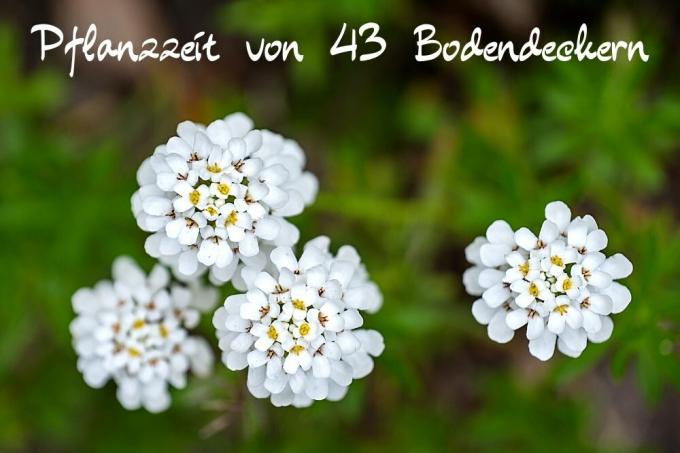
table of contents
- Relevant factors for the planting time of ground cover
- List evergreen ground cover
- List of blooming ground cover
- Species with attractive foliage
- List of walkable ground cover plants
- List of ground cover grasses
- frequently asked Questions
Ground cover is an indispensable element for an intact and functional garden. There are species for a wide variety of areas in the garden, evergreen, flowering and those that impress with their decorative leaves.
In a nutshell
- Ground cover grows in width rather than in height and green areas
- Form closed but nevertheless water-permeable plants
- Ground covers shade the soil and thus prevent it from drying out
- Protect slopes from slipping, keep moisture and nutrients in the soil
Relevant factors for the planting time of ground cover
When asked about the planting time of ground cover, the purpose of the planting and the location must be taken into account. Depending on the light available and the nature of the ground, there is a more or less high tolerance. Not to forget the time of year and the competition from other plants, especially during their main growing season.
List evergreen ground cover
Speedwell (Veronica)

- Planting from March to May
- Best planting time in mid-May
- As sunny locations as possible
- Well-drained, neutral soil
- 12-14 plants per square meter
Heather family (Ericaceae)

- Planting time depends on the species and flowering time
- Generally in September, October and November
- Or in spring from March to May
- Full sun or partial shade
- In barren, nutrient-poor and, as far as possible, lime-free soil
- Add plenty of sand to heavy soils
Lesser periwinkle (Vinca minor)
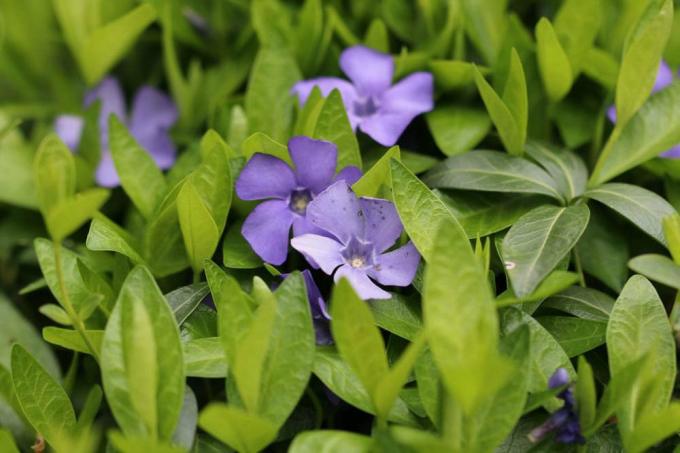
- Planting all year round, provided that it is frost-free
- Optimal planting time March to October
- Partly to shady locations
- Well-drained soil, humic, without waterlogging
- Avoid heavily compacted substrates
- Improve light sandy soils with potting soil
- Plant spacing of 25-30 cm
Tip: These robust plants are poisonous in all parts.
Candytuft (Iberis sempervirens)
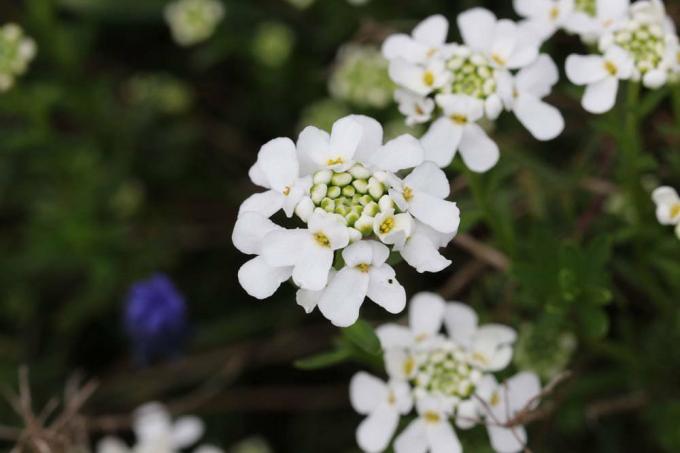
- Planting preferably in spring
- Sunny as well as shady, bright locations
- Permeable mineral soil optimal
- On humus rich, nutrient-rich soils, tendency to overgrow
- Distances of approx. 35 cm
Snail knotweed (Persicaria affinis)
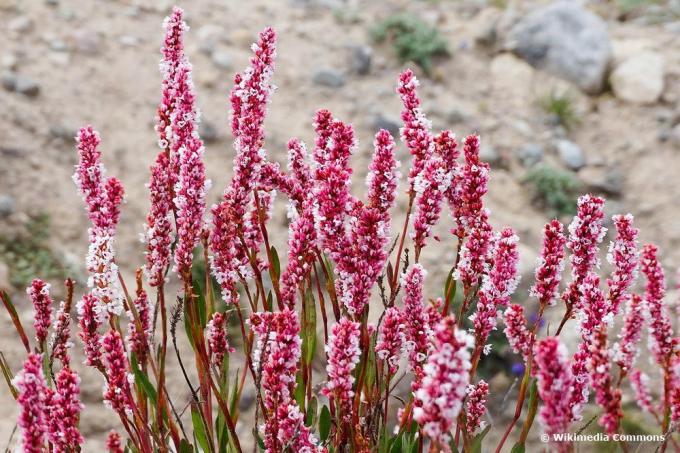
- Best planting time in spring or autumn
- Potted plants even in summer
- Fresh to moist soils
- Improve dry sandy soils with plenty of humus
- Planting distances depend on the growth of the respective species
- Cushion-forming species approx. 25 cm
Spindle shrub 'Emerald'n Gold' (Euonymus fortunei)
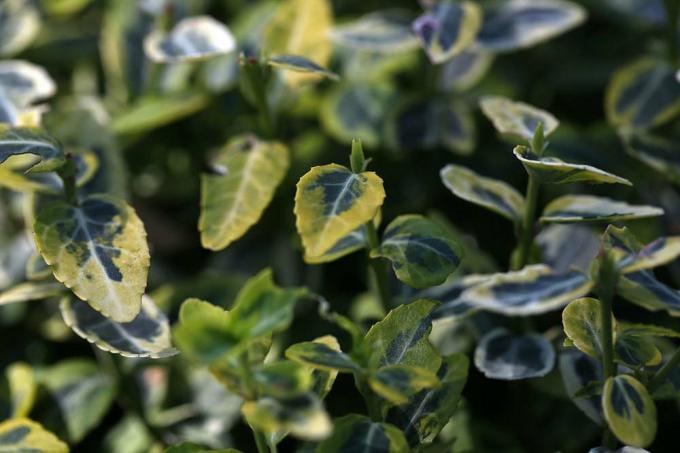
- Plantable in spring and autumn
- In frost-free soil also all year round
- Sunny, shady and fully shaded areas
- Well-drained, moderately dry to moist garden soil
- Five pieces per square meter
Stone seeds (Lithodora diffusa)
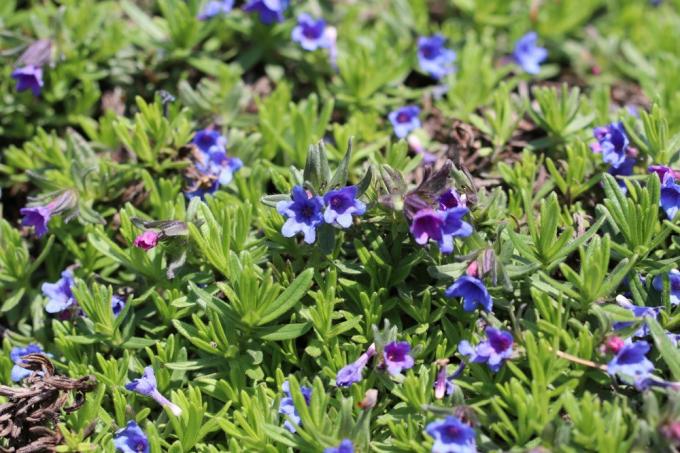
- Planting all year round, as long as the soil is frost-free
- Location as sunny as possible
- Lime-free, acidic soil made from humus and sand
- Add leaf soil instead of peat
- Plant spacing of 20-30 cm
- Winter protection recommended
Tip: The soil on which this ground cover grows should never dry out completely.
Shrub Veronica 'Green Globe' (Hebe armstrongii)
- Planting all year round, except when the ground is frozen
- Sunny to partially shaded, warm place
- Well-drained, moist, humus-rich soil, rich in nutrients
- Plant spacing 20-25 cm
- Heat protection on hot days, frost protection in winter
Loquat (Cotoneaster dammeri radicans)

- Plantable in late spring and summer
- Sunny to shady locations
- Any normal garden soil
- Plant in groups of five to six plants
- Plant spacing of approx. 45 cm
Carpet golden strawberry (Waldsteinia ternata)

- Optimal planting period from August to September
- Light and partially shaded locations
- Fresh, nutrient-rich soils, pH between 6.5 and 7.5
- Fold in compost if necessary
- Improve loamy soils with sand or gravel
- Plant spacing of 35-40 cm
Ysander / Dickmännchen (Pachysandra terminalis)
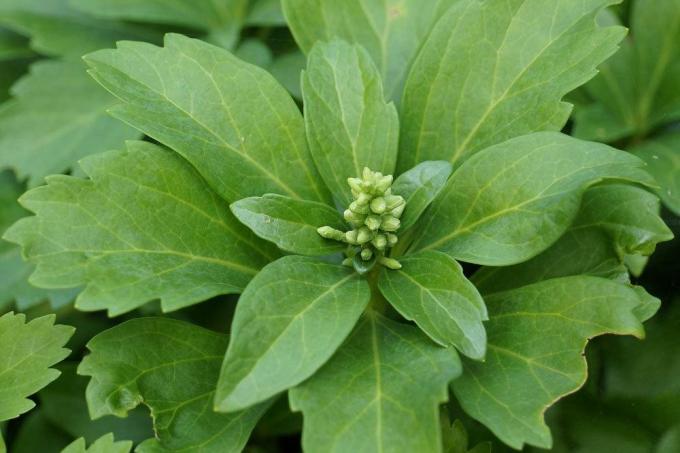
- Planting in spring and autumn
- Shady and partially shaded locations
- Soil loose, fresh to moist, moderately nutritious, slightly acidic to acidic
- Lime-sensitive ground cover
- About eight plants per square meter
Tip: The fat man is very sensitive to soil compaction
List of blooming ground cover
Blue pillow 'Winterberg' (Aubrieta x cultorum)
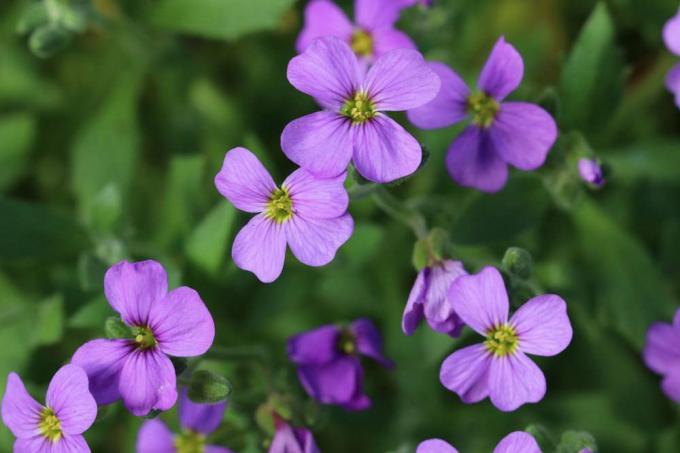
- Planting in autumn, depending on the variety also in spring
- For sunny to partially shaded locations
- Well-drained, humus and nutrient-rich soil
- Plant spacing 20-30 cm
- After pruning, re-flowering is possible
Ice flower 'Fire Wonder'
- Can be planted after the ice saints, from the end of May
- Sunny to partially shaded locations
- For dry and poor soils
- Plant spacing of 15-20 cm
- New cultivation of ice plant
Elven flower (Epimedium)
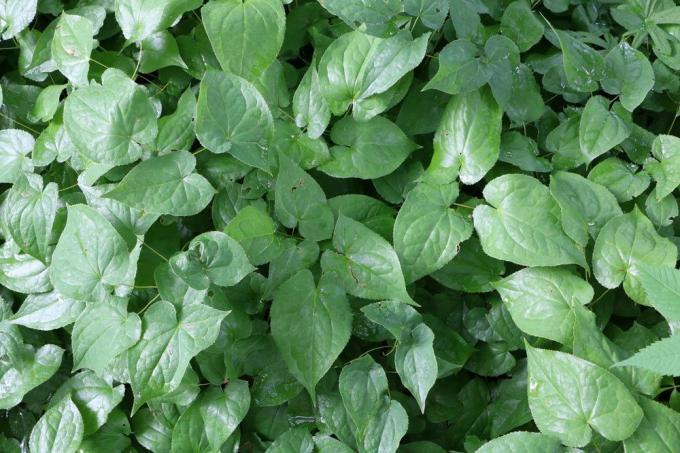
- Best time to plant in autumn
- Ground cover for partially shaded and shady locations
- Avoid locations that are particularly exposed to wind and open to the east
- Well-drained, fresh to moist soils with a high proportion of humus
- Slightly acidic with a pH of 5.5 to 6.5
- Plant spacing of 25-30 cm
Rock stone herb (Alyssum saxatile)

- Planting in spring and autumn
- Gold basket needs a lot of sun
- Well drained, humus-rich, sandy loam soil
- At best, calcareous and poor in nutrients
- Plant distance approx. 35 cm
Wing gorse (Genista sagittalis)
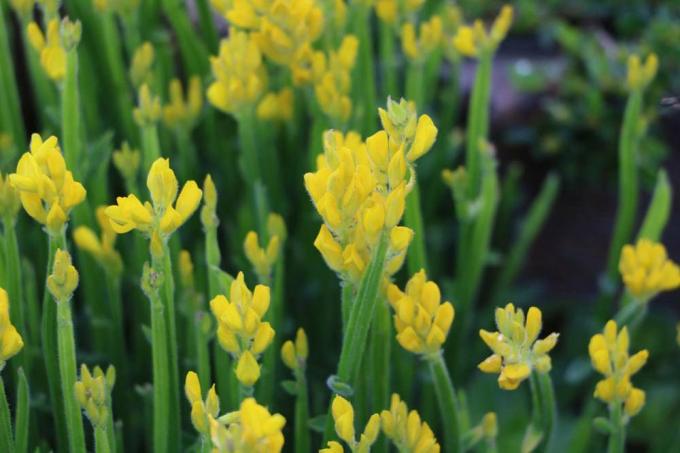
- Plantable from spring to autumn
- Stone and open spaces in full sun
- Warmth-loving and heat-tolerant
- Slightly acidic, nutrient-poor, dry and well-drained soils
- Avoid calcareous substrates
Tip: The winged gorse is poisonous in all parts of the plant.
Spring gentian (Gentiana verna)

- Can be planted all year round, in frost-free times
- Preferably sunny locations
- Calcareous, slightly acidic soils
- Mixture of rhododendron soil and sand
- Also tolerates stony surfaces
- Plant spacing 20 cm
Common soapwort (Saponaria officinalis)

- Plantable from spring to autumn
- Very bright, full sun locations
- Well-drained, sandy, slightly damp substrates
- Planting spacing at least 30 cm, depending on the variety
- Common soapwort is poisonous
Tip: Soapwort is a particularly easy-to-spread ground cover that can easily displace other plants.
Canadian dogwood (Cornus canadensis)

- Planting in spring and autumn
- Location partially to shady
- Moist, loose, weakly acidic bog and humus soils
- Sensitive to lime
- Six to eight plants per square meter
Upholstery or carpet phlox (Phlox subulata)

- Best planting time in spring
- Container plants can also be planted in summer
- Full sun, partial shade affects flowering
- Well-drained subsoil, dry to fresh, moderately rich in nutrients
- Prefers lime-free soils
- Plant spacing of 30-40 cm
Roman mock chamomile 'plenum' (Chamaemelum nobile)

- Plantable in spring and autumn
- Prefers sunny locations
- Well-drained, dry, humus and nutrient-poor soils
- Eight to eleven plants per square meter
- Distances 30-35 cm
Foam flower (Tiarella cordifolia)

- Planting time all year round in frost-free soil
- Partly to shady areas
- Loose, well drained, humus rich and fresh soils
- About eleven plants per square meter
- Plant spacing of 25-30 cm is recommended
Tip: This densely filled ground cover with its fragrant white flower balls is well suited as a fragrant lawn.
Cranesbill (geranium species)

- Can be planted in spring
- Sunny, partially shaded to shady locations
- Moderately moist, nutrient-rich, well-drained substrates
- Depending on the variety, partially shaded and moist, sunny and dry, shady and dry
- Plant spacing also depends on the variety
Carpet bellflower (Campanula portenschlagiana)

- Plantable from spring to autumn
- Sunny to partially shaded locations
- Thrives in any well drained, dry to fresh garden soil
- Up to 17 pieces per square meter
- Plant spacing of 20-30 cm
Tip: Dried shoots should be removed in spring.
White periwinkle 'Alba' (Vinca minor)

- Planting possible all year round, in frost-free soil
- Cope in shady and sunny locations
- Well drained and humus soil
- Plant spacing of 10-25 cm
- Several re-blooms in summer
Species with attractive foliage
Partridge berry (Mitchella repens)

- Plantable in spring and autumn
- Partly to shady locations
- Well drained, slightly humus soils
- About 12-16 plants per square meter
- Dark green leaves, light veins, purple stems
Spotted deadnettle 'Beacon Silver' (Lamium maculatum)

- Planting time in spring and autumn
- Locations in partial shade and shade
- Soil loose, calcareous, loamy, fresh, nutrient-rich and humus
- About 15 plants per square meter
- High leaf ornamentation value, good tolerance to frost
Caucasus forget-me-not 'Jack Frost' (R) (Brunnera macrophylla)

- Can be planted in spring
- Partly to shady locations
- With moist soil also sunny, no blazing midday sun
- Moderately moist to moist, humus-rich soil
- Weakly alkaline to slightly acidic, lime-tolerant
- Six to eight plants per square meter
Small Hosta - Hosta Sieboldii 'Bianca'
- Planting from mid / late May
- Partly shady to shady location
- Well-drained, humus-rich garden soil with sufficient moisture
- Five to eight plants per square meter
- Distances of 30-40 cm
Purple bells (Heuchera)
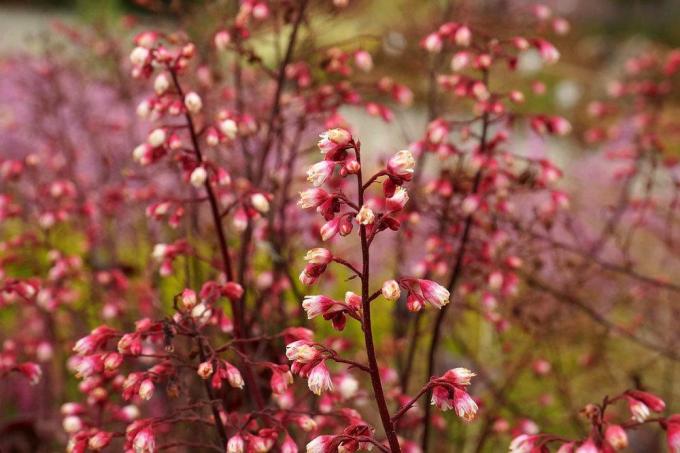
- Ideal planting time in August and September
- Sunny to partially shaded locations
- Fresh to moist, well-drained, sandy-loamy substrate
- Neutral to alkaline pH
- Plant spacing of 35-40 cm
White-colored creeper 'Variegatus' (Euonymus fortunei)
- Planting in spring and autumn
- Sunny to shady location
- Normal, fresh, nutrient-rich garden soil
- Six to eight pieces per square meter
- Planting distance 40 cm
List of walkable ground cover plants
Plumage (cotula)

- Plantable in early spring or autumn
- Sunny to partially shaded locations
- Well-drained, not too humus-rich, slightly moist and well-drained soils
- On one square meter approx. 15 plants
- Fine feathery foliage
Tip: The feather pad is very suitable as a lawn substitute. If it is too dry, it also turns brown, but recovers relatively quickly after watering.
Harvested rockcress (Arabis Ferdinandii coburgi)

- Plantable in spring and late summer
- Sunny, partially shaded and shady locations
- Well-drained, dry to fresh, moderately nutrient-rich soil
- Plant spacing of 10 cm
- Enjoyed in moderation, edible
Hazelwort (Asarum europaeum)

- Ideally planting from March to May
- Well-drained, very humus-rich, calcareous substrates
- Shady, partially shaded, evenly moist places
- 15-17 plants per square meter
- Plant spacing of 25 cm
Tip: All parts of the hazel root are poisonous. Thanks to the shape and color of the leaves, it is also very suitable as a decorative leaf plant.
Creeping carpet verbena (Phyla nodiflora)
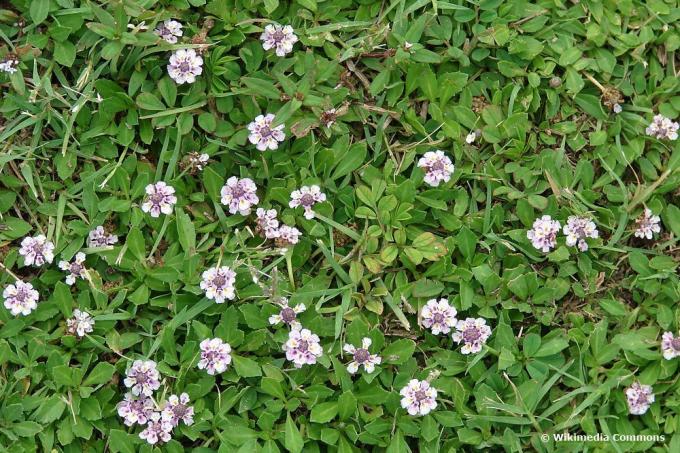
- Plantable in spring and autumn
- For sunny to partially shaded locations
- Well-drained, dry to fresh soil
- Three to six pieces per square meter
- Good substitute for lawn
Tip: A fixed demarcation is recommended in order to avoid uncontrolled spread.
Pennywort (Lysimachia nummularia)

- Planting in spring or autumn
- Location shady to shady
- Avoid full sun
- Moist, loamy-sandy, nutrient-rich soils
- Eight to ten pieces per square meter
- Planting distance 35 cm
Tip: The pennywort is a good ground cover for that Pond edge, Wooded edges and open spaces.
Lemon thyme (Thymus citriodorus)
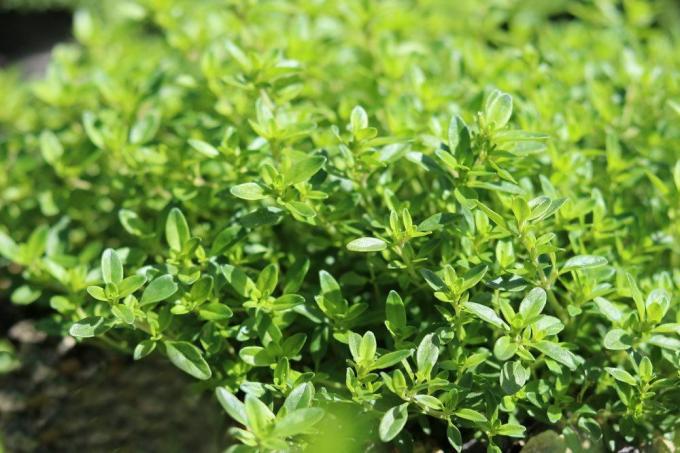
- Can be planted almost the entire season
- Full sun, warm, sheltered places
- Well drained, dry, loamy-sandy, calcareous soils
- Clearances of at least 25 cm
- Protect from winter wetness
Cotoneaster (Cotoneaster)

- Planting time in winter between October and May
- Sunny to partially shaded locations
- Heat and short-term dryness are unproblematic
- Waterlogging is not forgiven
- Humous, loose, permeable, calcareous and nutrient-rich substrates
- Plant spacing depending on the desired density
- At least 50 cm
Tip: Because of its hydrogen cyanide content, especially in the decorative fruits, the coton loquat is considered to be slightly poisonous.
List of ground cover grasses
Yellow-colored Hakonengrass (Hakonechloa macra 'Aureola')
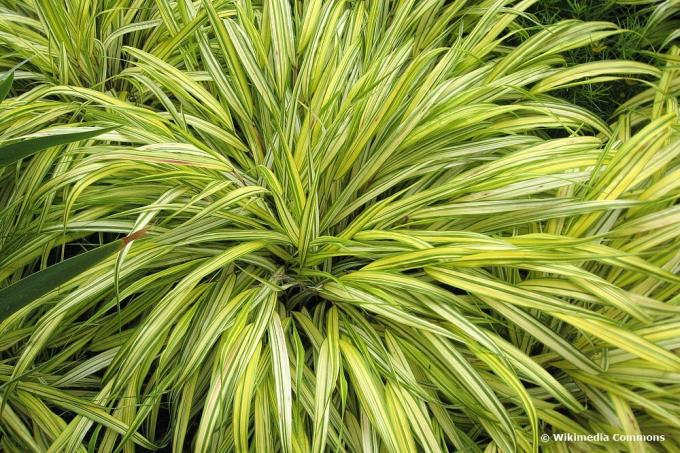
- Best planting time in spring
- Shady, partially shaded locations
- Fresh to moist, humus rich, nutrient-rich soils
- Avoid waterlogged and calcareous substrates
- Plant spacing 30-40 cm
Golden fescue 'Golden Toupee' (Festuca glauca)
- Planting time from March to October
- Sunny to partially shaded locations
- Well-drained, dry soil
- Make it more permeable with sand or gravel, thin out
- Distances of 20-30 cm
Tip: Fescue fescue lose their characteristic appearance on loamy, nutrient-rich soils.
Japanese sedge (Carex morrowii)

- Plantable from spring to autumn
- Location partially to shady
- Soil fresh to moderately moist, rich in humus and nutrients
- Plant spacing 30-50 cm
- Tolerates root pressure of old trees
Snake beard (ophiopogoan)

- Plant preferably in spring
- Light to partially shaded areas
- Moderate temperatures, sheltered from the wind
- Well-drained soil, rich in humus, slightly acidic
- Plant spacing 20-30 cm
Forest marbel (Luzula sylvatica)

- Planting in spring
- Partly to shady areas
- Soil fresh to moist, well-drained, poor in nutrients
- Plant spacing of 30 cm
- Seven to nine grasses per square meter
- Tolerates competition from larger plants
frequently asked Questions
To be maintenance-free, it should be uniform and weed-free. It is best to dig up thoroughly beforehand.
Suitable are e.g. B. Creeping Gunsel, barnuts, fat man, elf flower, cat's paw and the foam blossom.
Mowing is not required. However, the mats can be trimmed if desired, but this is not necessary.
